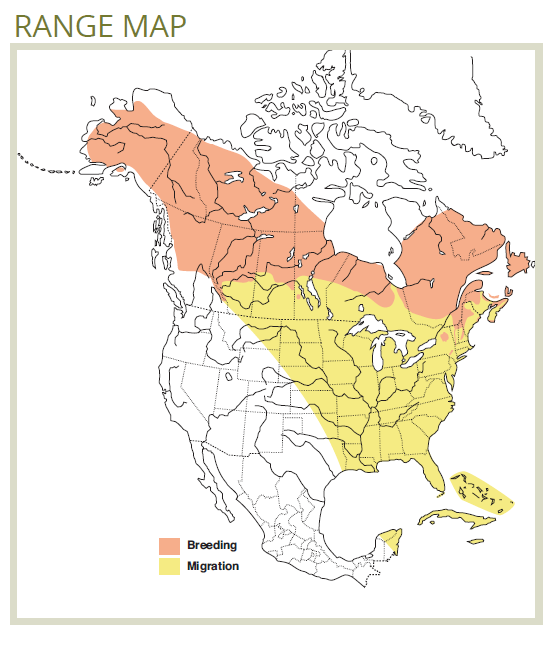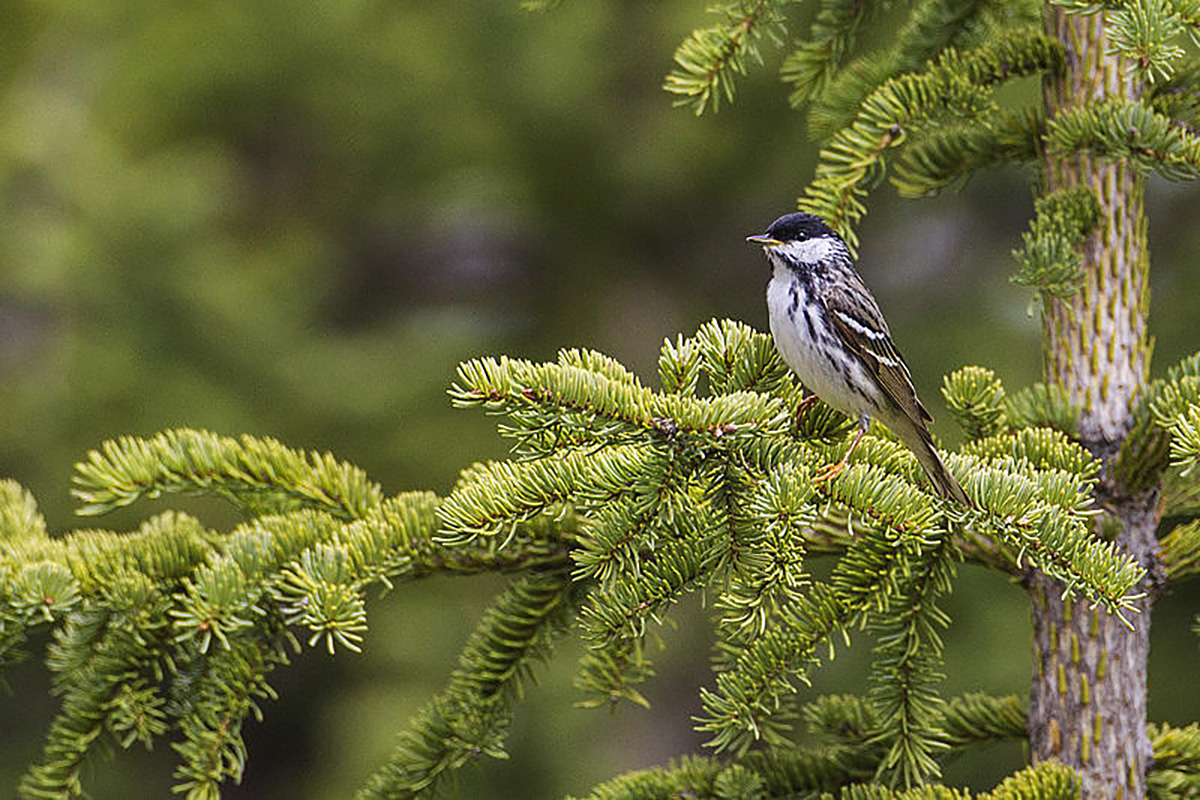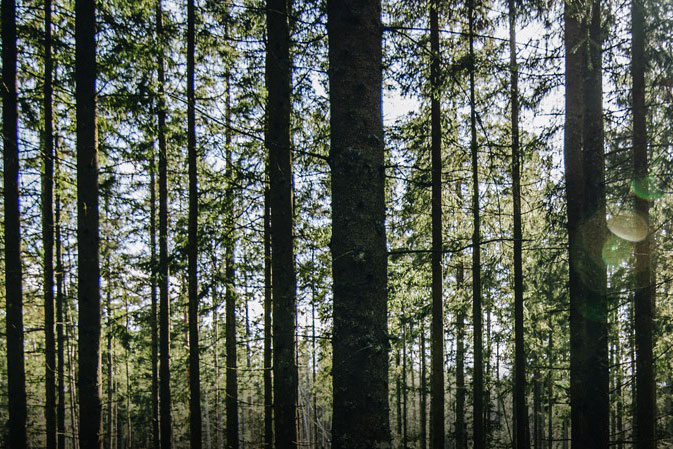This species occurs in low densities and has a quiet song, making it difficult to study. Most studies are from the eastern boreal forest and should be interpreted with caution.
Blackpoll Warbler
(Setophaga striata)
Habitat Ecology
- The Blackpoll Warbler’s primary habitat is wet conifer forest (black spruce, tamarack) and riparian spruce/alder/willow thickets. Subalpine habitats include mixed conifer, birch and aspen.1
- Old aspen forest (>125 years old)2 and young pine and mixedwood3 may be important habitat in western forests but this is based on only a few studies, making it difficult to draw strong conclusions (See Knowledge Gaps).
- These warblers typically build their nests about a meter off the ground, often against the trunk of a conifer.1
- Young Blackpoll Warblers use habitat with high volumes of coarse woody debris.4

Response to Forest Management
- Clearcuts are generally considered low-quality habitats, but they may recolonize them relatively quickly (e.g., after 10 years).1
Stand-level Recommendations
- Given the small amount of information available on this species, their response to riparian buffers is uncertain.5,6 Minimum riparian buffer widths of 60 m are conservatively recommended within spruce forests.5
- The amount of green-tree retention needed to benefit this species is not known. However, harvest patterns that increase volumes of coarse woody debris may provide some long-term benefits as the block regenerates.
Landscape-level Recommendations
- Blackpoll warblers have a strong association with riparian white spruce, low-productivity black spruce/tamarack (including bogs), and other wet, old coniferous forests. This suggests that the passive landbase (riparian zones, wet areas) will likely contribute to habitat for this species on the landscape.1,7
Knowledge Gaps
- This species occurs at low densities and is difficult to detect, and multi-species studies rarely obtain enough observations to analyze Blackpoll Warbler’s response to harvest. More targeted research is required to determine best practices for managing this species in western Canadian forests.
References
- DeLuca, W., Holberton, R., Hunt, P. D. & Eliason, B. C. 2013. Blackpoll Warbler (Setophaga striata), version 2.0. in The Birds of North America (Rodewald, P. G., ed.) Cornell Lab of Ornithology, Ithaca, New York, USA. Available online: https://doi.org/10.2173/bna.431
- Schieck, J. & Song, S. J. 2006. Changes in bird communities throughout succession following fire and harvest in boreal forests of western North America: literature review and meta-analyses. Canadian Journal of Forest Research 36: 1299–1318. Available online: https://doi.org/10.1139/x06-017
- ABMI. 2017. Blackpoll Warbler (Setophaga striata). ABMI Species Website, version 4.1 Available online: http://species.abmi.ca/pages/species/birds/BlackpollWarbler.html
- Mitchell, G. W., Taylor, P. D. & Warkentin, I. G. 2010. Multiscale Postfledging Habitat Associations of Juvenile Songbirds in a Managed Landscape. The Auk 127: 354–363.
- Darveau, M., Beauchesne, P., Bélanger, L., Huot, J. & Larue, P. 1995. Riparian forest strips as habitat for breeding birds in boreal forest. The Journal of Wildlife Management 59: 67–78. Available online: http://www.jstor.org/stable/3809117
- Whitaker, D. M., Carroll, A. L. & Montevecchi, W. A. 2000. Elevated numbers of flying insects and insectivorous birds in riparian buffer strips. Canadian Journal of Zoology 78: 740–747. Available online: http://www.nrcresearchpress.com/doi/abs/10.1139/z99-254
- Environment Canada. 2013. Bird Conservation Strategy for Bird Conservation Region 6: Boreal Taiga Plains. Canadian Wildlife Service, Environment Canada, Edmonton, Alberta. 288 pp.








